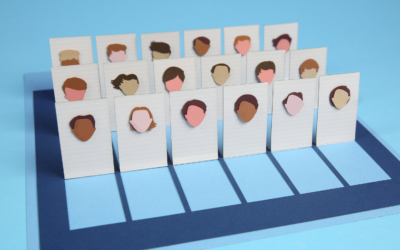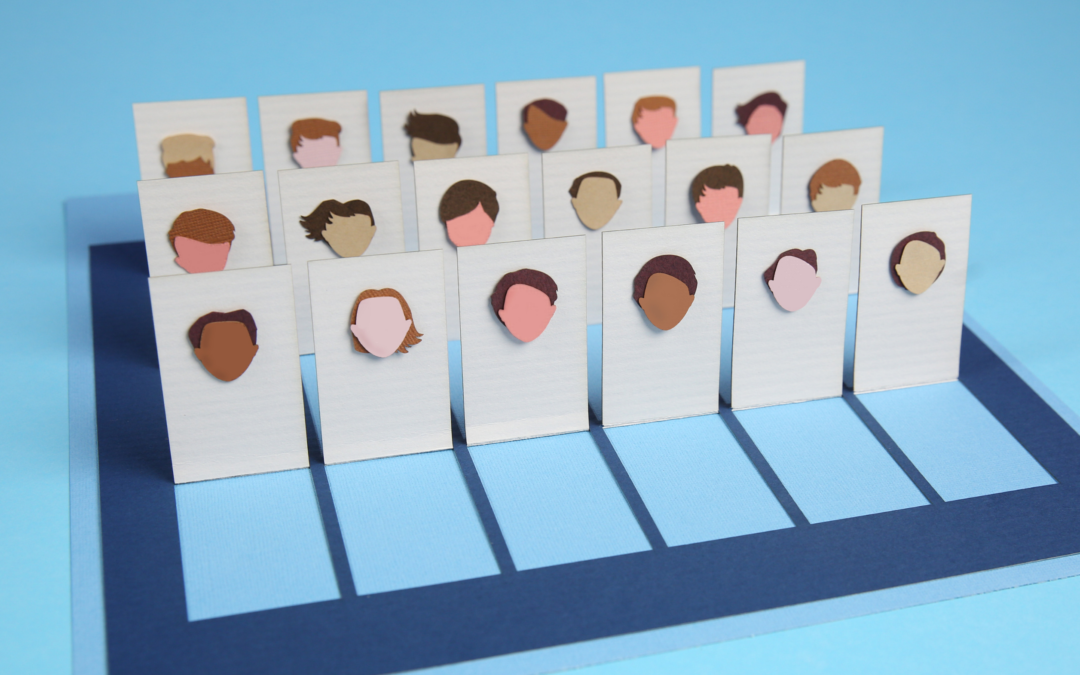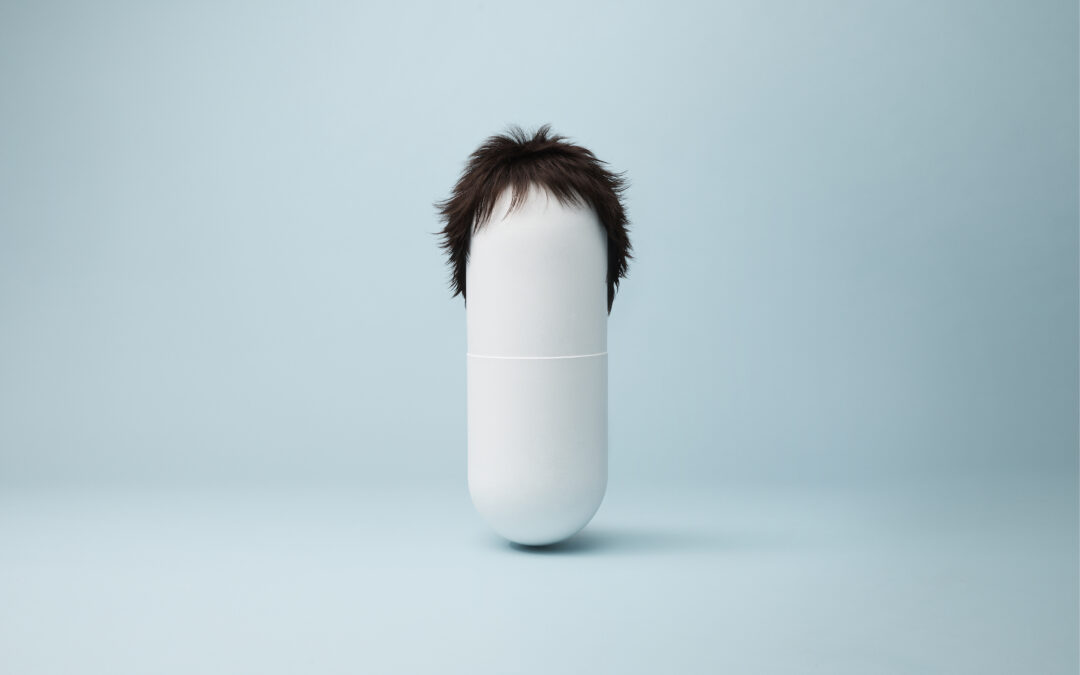Men’s Hair Loss – Treatment and Solutions
Hair loss. Disconcerting? Yes. But are you alone? Not at all.
Mens hair loss is extremely common. Around 20% of Australian men will become bald in their 20s, with that figure growing to almost half of all men by their 40s.
It’s a hairy statistic to dwell on. But it’s also an avoidable one.
Yes, there are hair loss treatments that can prevent hair loss, or stop it in its tracks. But it helps to understand a bit about the process itself. So let’s take a look at the signs of hair loss in men, causes, and possible hair loss and hair growth treatments.
How to Recognize the Early Signs of Hair Loss
The first signs of hair thinning and hair loss in men can appear as early as their teens and may include:
- Thinning hair on the scalp
- A receding hairline (this usually begins at the forehead and resembles an M shape)
- Circular or patchy bald spots, especially around the crown
- Clumps of hair on the brush or clogging the shower drain (it’s common to lose about 50-100 hairs a day, which is just a small bundle in your hand. More than that could be a sign of hair loss).
The most clinical way to track hair loss in men is the Hamilton-Norwood Scale (often just called the Norwood Scale). The chart might look familiar to you: It’s what we use to assess your stage of hair loss when you fill out our form.
The Norwood Scale measures hair loss through 7 simple stages:
Stage 1: No visible signs of balding or a thinning hairline.
Stage 2: A mild receding hairline at the templates (or a mature hairline — see below)
Stage 3: A significantly visible receding hairline with bald spots or profound thinning, creating an M, V, or U shape at the temples. Alternatively, the hairline remains in the Stage 2 position but there’s substantial hair loss at the vertex (crown).
Stage 4: There’s little to no hair on top of the scalp. A narrow band of hair links patches of hair around the sides of the head.
Stage 5: The band of hair becomes noticeably thinner as areas of hair loss grow.
Stage 6: Any band of hair on top of the scalp is nearly or totally gone. Hair loss from the temples reaches the crown.
Stage 7: The top of the head is bald, although there may still be some hair at the back and sides of the head.
Male Pattern Baldness vs Maturing Hairline
How can you tell whether you have male pattern baldness or just a maturing hairline? Because there is a difference.
Everybody’s hairline changes as they get older. This happens most obviously during your teen years, when your hairline loses its rounded edges and becomes slightly less defined and slightly higher. This is what we call a mature hairline and almost 96% of men get it.
Male pattern baldness (also called androgenic alopecia) is still common, affecting up to 70% of men in their lifetime. But the effects are more obvious than a mature hairline.
It’s called male pattern baldness because there’s a general pattern to the hair loss, starting with a noticeable receding hairline and thinning hair on the crown and temples, as outlined in the Norwood Scale.
So how do you tell the difference? In general, a mature hairline develops evenly, with the entire hairline receding about 1-1.5cm. With male pattern baldness, the hair loss creates an M, V, or U shaped hairline and continues to recede further than 1.5cm.
The Different Types of Hair Loss
While male pattern baldness is the most common cause of hair loss, there may be other reasons for your barely-there hair. Let’s take a look at some of the most common types of hair loss.
Androgenetic Alopecia
Androgenetic alopecia (also called androgenic alopecia) is another name for male pattern baldness. It’s a hereditary condition that follows the typical Norwood Scale pattern of hair loss we described above.
While it can begin any time after puberty, androgenetic alopecia can progress quickly or over decades. Many men who have male pattern baldness will end up bald.
Telogen Effluvium
You might have telogen effluvium if there’s a disruption in your hair growth cycle. It usually happens when a large number of your hair follicles enter the resting phase but the next growth phase doesn’t begin, so the new hair doesn’t replace the fallen.
Telogen effluvium is typically caused by a shock to the body, usually a medical event or condition.
Had surgery or a fever recently? Started a new medication? Had a vitamin or mineral deficiency? Any of these events could trigger hair loss.
You usually notice the effects 3 months after the medical event, when you start losing anywhere between 300 and 500 hairs a day. Your hair may also look thin at the crown and the temples.
Your hair cycle usually recovers after six months. If it doesn’t, telogen effluvium can become a chronic condition.
Anagen Effluvium
This is the type of hair loss you usually get after chemotherapy, when the treatment shuts down hair follicle production. Your hair should start growing back after chemo but hair loss dermatologists can help speed up the process.
Alopecia Areata
Alopecia areata is an autoimmune condition where your immune system attacks your hair follicles and prevents new hair from growing. It can happen all of a sudden, in both adults and children.
Though it’s not a painful process, it can be distressing, with patches of hair falling from the scalp, eyebrows, and eyelashes.
The Available Treatments for Hair Loss
Now we get to the good stuff — treatment! Because hair loss can be reversed, or even prevented, if you catch it early. Leave it too long and it may be permanent.
There are a few hair loss treatments for men, including hair loss medications and surgery.
The Hairy Pill®
The Hairy Pill® isn’t your regular treatment. Unlike other hair growth treatments, we tailor the treatment specifically to you — without the hassle of surgery or the gamble you take with stock-standard medication.
Not a gimmick. Just science. A single pill, taken daily, personalised to you and patented by world-renowned dermatologist Professor Rodney Sinclair.
So how does it work? The Hairy Pill® contains 2 active ingredients along with a combination of vitamins and minerals personalised to your needs.
No outpatient clinic or trips to the pharmacy. The Hairy Pill® is accessible through a simple process. Just fill out our online form, get home delivery, and have ongoing doctor check-ins via phone or online.
Hair Transplants
Hair transplants are a common, though costly, procedure for male hair loss. Here, hair is taken from one hairy part of the head and transplanted to a bald or thinning patch.
This usually works best with thicker and lighter coloured or grey hair, rather than thinner or darker hair.
Don’t be fooled into thinking this is a quick fix. Transplants can take up to 9 months for the hair to take root and fill in and the procedure can cost anywhere from about $4000 to $10,000.
Finasteride and Minoxidil
Most GPs will give you Finasteride to stop your hair loss and send you on your way. In larger doses, Finasteride is used to treat men with benign prostate issues. In smaller doses, it can treat male pattern hair loss.
Finasteride is a type of drug called a 5-alpha-reductase inhibitor, meaning it stops testosterone from turning into dihydrotestosterone (DHT), the hormone that causes hair loss.
And while the medication has been shown to slow hair loss and improve hair growth, it’s not an effective treatment if taken alone.
If you want to up the ante and regrow your hair, many GPs recommend Minoxidil (most commonly sold under the brand name REGAINE®). Minoxidil is a topical treatment or spray that relaxes and enlarges certain small blood vessels to facilitate blood flow.
In the case of hair loss, Minoxidil may help deliver more nutrients and oxygen to your hair follicles to slow down hair loss and promote hair growth. But it should only be used with doctor supervision to track side effects (including cardiovascular issues).
It’s also worth noting that it takes on average 6-9 months to see any results from minoxidil, and its success rate is typically 50% for men (even less for women).
As with your overall health, your hair situation is unique and shouldn’t be treated with one fixed treatment option.
Our Tips for Hair Loss Prevention
Leave it too late and your hair loss may be permanent but with the right hair growth medication, you can take steps to prevent hair loss.
Meanwhile, you may try practising a few at-home tips to improve the health of your hair, including:
- Avoiding tight styling or harsh styling tools (such as hair dryers or chemical treatments)
- Eating a diet rich in vitamins and minerals (and taking supplements where needed)
- Massaging the scalp to promote circulation
Looking to Get Treatment for Your Hair Loss?
Ready to find the right treatment for your hair loss? It starts with taking early action. And we’ve made that as easy as possible.
Learn more about our men’s hair loss treatment online today and start your journey to a healthier, thicker head of hair.





